Wildflowers, Grasses and Other Nonwoody Plants
Media
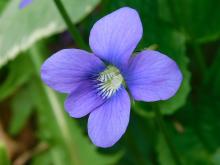
Species Types
Scientific Name
Viola sororia
Description
The common violet can be violet, white, or white with violet mottling or spots. One of 17 species or violets in Missouri, it occurs statewide in a variety of habitats. Note its heart-shaped or rounded, scalloped leaves, and (usually) the presence of hairs on stems and/or foliage.
Media

Species Types
Scientific Name
Oxalis violacea
Description
Missouri has one introduced and four native wood sorrels. Violet wood sorrel is the only one that has magenta or lavender flowers.
Media

Species Types
Scientific Name
Torilis arvensis
Description
Hedge parsley is an introduced plant that looks a lot like parsley. It was first collected in Missouri in 1909 and has become much more abundant in recent decades as it spreads along roadsides and railroads.
Media
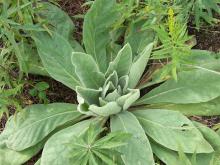
Species Types
Scientific Name
Verbascum thapsus
Description
Mullein immigrated to America along with Europeans, and with them it has spread across the continent. Its fuzzy, green-gray rosettes of leaves and tall spikes of yellow flowers make it easy to identify.
Media
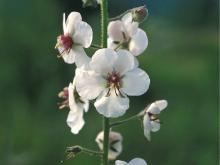
Species Types
Scientific Name
Verbascum blattaria
Description
Moth mullein is a native of Eurasia introduced to our continent in the early 1800s. Since then, it has spread across North America. It’s named because the fuzzy flower, with 2 antennalike stamens, looks something like a moth.
Media
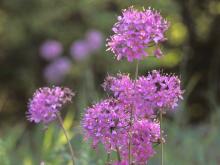
Species Types
Scientific Name
Allium stellatum
Description
Wild onion is edible and is also favored by native-plant gardeners, who enjoy its showy umbels of pink flowers and tolerance of dry, rocky sites. This Ozark species blooms in summer and fall.
Media

Species Types
Scientific Name
Liatris aspera
Description
Rough blazing star is fairly common and scattered nearly statewide. To distinguish between Missouri’s nine species in the genus Liatris, start by noting details of the flower structure. It’s not hard when you know what to look for.
Media
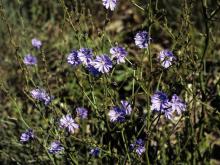
Species Types
Scientific Name
Cichorium intybus
Description
In summer and fall, the pretty blue flowers of chicory decorate roadsides and other disturbed areas. This weedy member of the aster family was introduced from Europe long ago. Its roots have been used as a coffee substitute.
Media

Species Types
Scientific Name
Carduus nutans
Description
An invasive native of Eurasia that is spreading in Missouri, musk thistle is a plant you should know. Learn how to tell the difference between our native thistles and these bad guys.
Media

Species Types
Scientific Name
Cirsium vulgare
Description
Bull thistle is a weedy introduction from Europe, found statewide. To tell it from our other thistles, note its stems with spiny-margined wings, and its leaves with the upper surface strongly roughened with stiff, spiny bristles.
See Also
About Wildflowers, Grasses and Other Nonwoody Plants in Missouri
A very simple way of thinking about the green world is to divide the vascular plants into two groups: woody and nonwoody (or herbaceous). But this is an artificial division; many plant families include some species that are woody and some that are not. The diversity of nonwoody vascular plants is staggering! Think of all the ferns, grasses, sedges, lilies, peas, sunflowers, nightshades, milkweeds, mustards, mints, and mallows — weeds and wildflowers — and many more!





















